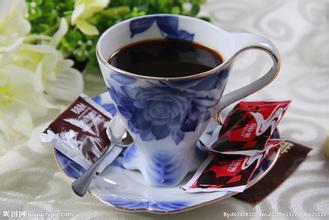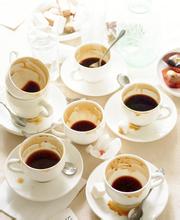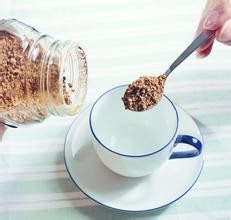Slightly bitter Cuban Crystal Mountain Coffee Flavor taste Manor characteristics of boutique coffee beans
Cuba is like a crocodile crouching in the Caribbean, her tail brushing right on the Tropic of Cancer. Cubans have always been known for their enthusiasm, but they are also very sincere and stubborn. The same is true of the coffee they produce, which has always been carried out in accordance with the washing standards of Arabs, and they have always followed their unique traditional methods of making coffee, extremely extreme control of the roasting process, not only to have a very delicious, full-bodied and slippery coffee flavor, but also to keep coffee beans from becoming hot due to over-roasting in Cuba. The picking of coffee beans is all done by hand. Coffee beans are picked about every half a month during the ripening period. During or after picking, coffee beans are classified and those immature and bad beans are removed to ensure the quality of the coffee. Cubans usually deal with coffee beans in two ways-tanning and washing. Tanning is the simplest, cheapest and most traditional way to treat coffee, which is to let the coffee fruit dry in the sun but not ferment. The general drying time is about four weeks. The law of washing makes the aroma of fruit more into the coffee beans, thus adding a crude, fruity flavor to coffee. Coffee was introduced to Cuba from Dominica in 1748, and Cuba has grown coffee ever since. With fertile land, humid climate and abundant Rain Water, Cuba can be called a natural treasure land for coffee cultivation. The suitable natural conditions provide a favorable natural environment for the growth of coffee trees, and coffee is well planted and developed here. In Cuba, the cultivation of coffee is regulated by the state. The best coffee growing area in Cuba is located in the Central Mountains. Because this area not only grows coffee, but also produces quartz, crystal and other precious minerals, it is also known as Crystal Mountain. At present, Crystal Mountain Coffee is synonymous with top Cuban coffee. In the early 20th century, the number of coffee shops in Havana once exceeded 150, but this number has declined year by year since then, due to the decline in Cuban coffee production and the increase in the proportion of rum and sugar exports. Former Cuban President Fidel Castro unified the coffee industry into state ownership during the 1959 Cuban Revolution and asked the country to increase the cultivation of edible crops. "although coffee production has decreased, consumer demand is on the rise." Fifty years ago, Cuba produced 60, 000 tons of coffee a year, but now that figure has plummeted to 6000 tons. "
Due to declining production, the Cuban government in 1962 rationed 4 ounces of coffee per person per month, resulting in the emergence of alternatives to coffee, such as chickpea coffee. "this is a coffee substitute with a mixture of coffee and roasted chickpea powder so that more people can drink more coffee." Goldenberg said. At the local caf é con ch í charo, the barista made him a cup of hummus coffee with a strong, rough and slightly bitter taste. Because the taste is too bad, the local people are used to adding a lot of sugar to the coffee. Chickpea coffee is very common in local rationing stores. Of course, you can also go to a normal store to buy normal coffee, but given the local people's income of $20 a month, coffee is definitely a luxury for most people. Due to the limited amount of coffee, people in Havana drink coffee from very small cups, and the amount of coffee per cup is very small.

Important Notice :
前街咖啡 FrontStreet Coffee has moved to new addredd:
FrontStreet Coffee Address: 315,Donghua East Road,GuangZhou
Tel:020 38364473
- Prev

Introduction to high-quality and balanced Peruvian coffee flavor and taste of boutique coffee beans in manor production area
Peru is also a big coffee producer. Up to 98% of Peruvian coffee is grown in forest areas, and most producers are small farmers. Coffee is high-quality and balanced and can be used for mixed drinks. Peru has good economic conditions and a stable political situation, thus ensuring the good quality of coffee. In the mid-1970s, Peru produced about 900000 bags of coffee a year, and then continued.
- Next

Fragrant and mild taste of El Salvador Cuskabapa region boutique coffee beans taste manor
The national flag of El Salvador was launched in 1822, was rescinded in 1865, was restored in 1912, and was officially established as the national flag in the 1972 Constitution. The national flag is rectangular, with a ratio of length to width of 335 to 189. From top to bottom, the flag is connected by three parallel equal horizontal rectangles of blue, white and blue, and the central part of the white part is painted with the national emblem. Because El Salvador used to be a member of the Central American Federation, its flag is beautiful.
Related
- Detailed explanation of Jadeite planting Land in Panamanian Jadeite Manor introduction to the grading system of Jadeite competitive bidding, Red bid, Green bid and Rose Summer
- Story of Coffee planting in Brenka region of Costa Rica Stonehenge Manor anaerobic heavy honey treatment of flavor mouth
- What's on the barrel of Blue Mountain Coffee beans?
- Can American coffee also pull flowers? How to use hot American style to pull out a good-looking pattern?
- Can you make a cold extract with coffee beans? What is the right proportion for cold-extracted coffee formula?
- Indonesian PWN Gold Mandrine Coffee Origin Features Flavor How to Chong? Mandolin coffee is American.
- A brief introduction to the flavor characteristics of Brazilian yellow bourbon coffee beans
- What is the effect of different water quality on the flavor of cold-extracted coffee? What kind of water is best for brewing coffee?
- Why do you think of Rose Summer whenever you mention Panamanian coffee?
- Introduction to the characteristics of authentic blue mountain coffee bean producing areas? What is the CIB Coffee Authority in Jamaica?

